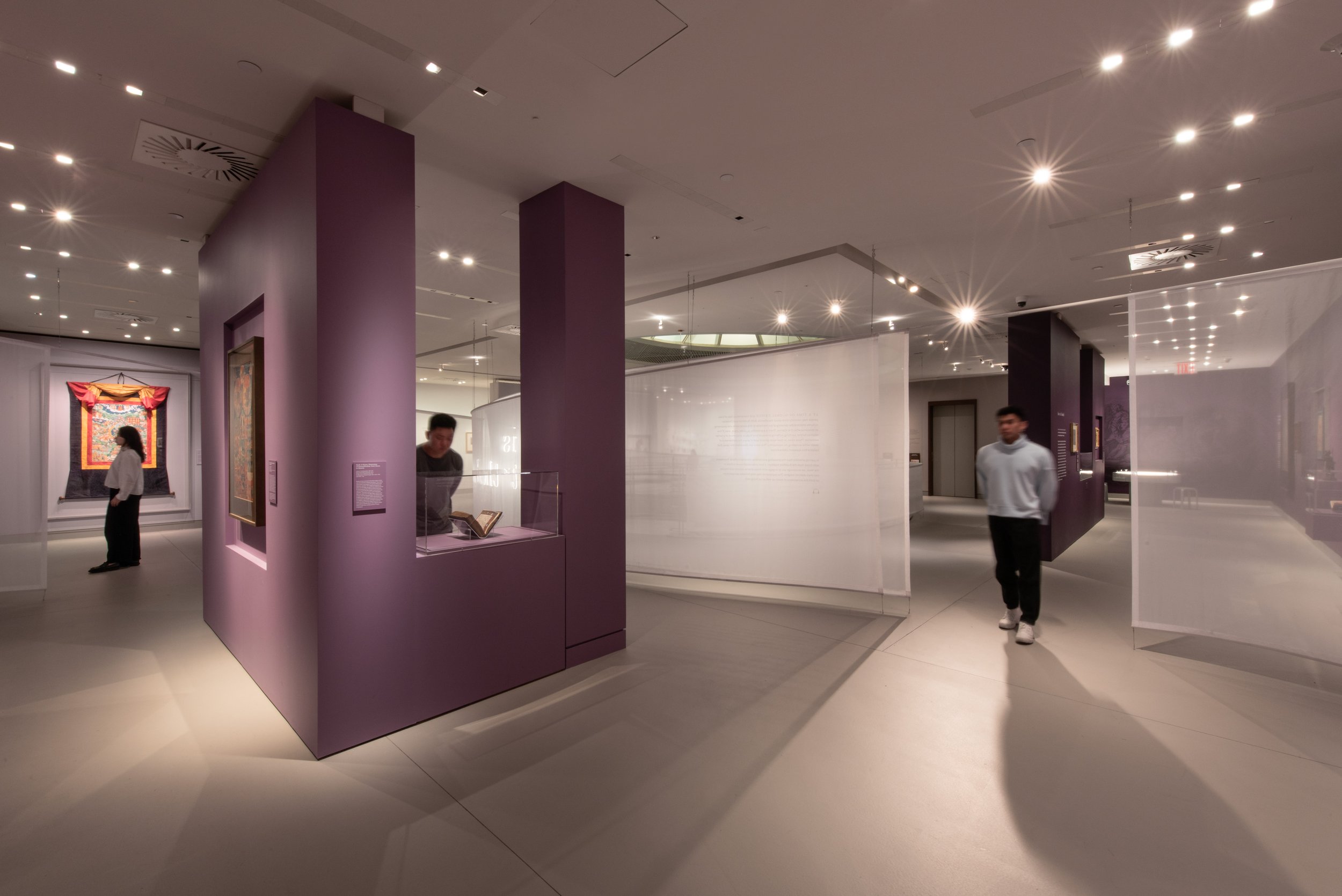Death Is Not the End
Visual Identity, Exhibition, Architecture
Cross-cultural exhibition at the Rubin Museum exploring death and the afterlife through Tibetan Buddhist and Christian art
Image courtesy of the Rubin Museum of Art; photograph by David De Armas, 2023
Contemplating mortality and the afterlife
Isometric designed Death Is Not the End, a cross-cultural exhibition at the Rubin Museum of Art that juxtaposes Tibetan Buddhist and Christian perspectives on human impermanence and life after death. Spanning 12 centuries and taking up 3135 sq. ft. on the museum’s top floor, the immersive, ethereal display explores themes of mortality, purgatory, and the afterlife. A suspended monumental scrim wraps the building’s central staircase, complementing the gallery architecture while rising gradually to form thresholds between themes. The resulting spaces are further punctuated by freestanding walls with large openings and inset alcoves to frame artworks. Custom casework and displays hold 58 objects, many of which come from renowned institutions from around the world. The graphic design takes on a gauzy, illuminated character through a main neon title and backlit title panels that demarcate each section. The mood of the gallery—defined through wall color transitions—gradually shifts from pensive and subdued to bright and sublime, making the journey across themes feel hopeful and elevated.
Exhibition fabrication and installation by South Side Design and Building. Neon by Noble Signs.
Left: Wheel of Life; Tibet or Mongolia; 19th century; Pigments on cloth; Rubin Museum of Art; gift of Shelley and Donald Rubin; C2006.66.131 (HAR 78)
Right: Memento Mori Prayer Bead, Bowdoin College Museum of Art, Brunswick, Maine, Gift of Linda and David Roth in memory of David P. Becker.
A communal space for solace
Sited in an intimate gallery alcove, a community sand table encourages visitors to write their loss with a wooden dowel — perhaps the name of a loved one, a poignant memory, or a thought they wish to leave in the past. Visitors then use a rake to clear the sand, erase the message, and start again from a clean slate. The experience is designed to be moving and meditative: a shared act of recording grief on an ephemeral, illuminated surface that provides a space for catharsis and reinvention.
Resurrection of Christ, Collection of the Frances Lehman Loeb Art Center at Vassar College, Gift of the Samuel H. Kress Foundation.
Image courtesy of the Rubin Museum of Art; photograph by David De Armas, 2023.
Left: Traveling Shrine of Vairocana and Eight Bodhisattvas, China, 8th-9th century C.E. The Nelson-Atkins Museum of Art, Kansas City, Missouri. Purchase: William Rockhill Nelson Trust, 44-18. Image courtesy of the Rubin Museum of Art; photograph by David De Armas, 2023.
Right Case: Ritual Crown and Bone Arm Bracelets, Courtesy of the Jacques Marchais Museum of Tibetan Art. Right Wall: Amitabha Buddha in Sukhavati Paradise, Courtesy of San Antonio Museum of Art. Image courtesy of the Rubin Museum of Art; photograph by David De Armas, 2023.
Speculating about death and life after
A second interactive positioned at the conclusion of the exhibition offers space for reflection. Cards on a table ask the visitor questions such as “How does believing — or not believing — in the afterlife impact how you live?” or “Describe your perfect afterlife.” Answers range from the profound and powerful to sweet and silly. Visitors reflect on their souls, on peace, on pain, on ice cream, on love. The simple act of writing or drawing conveys a gravity of emotion connected deeply to the exhibition’s themes.






















